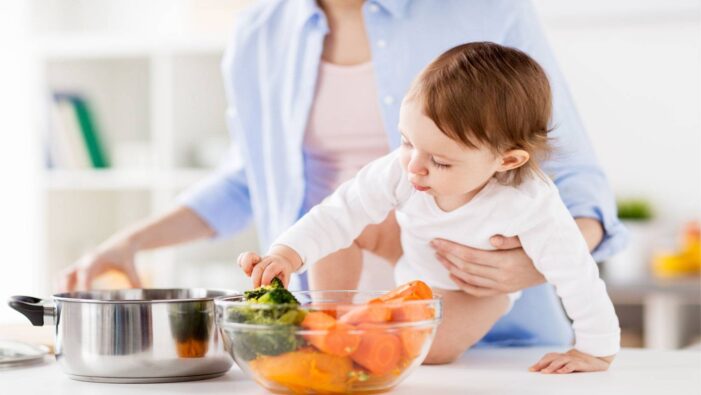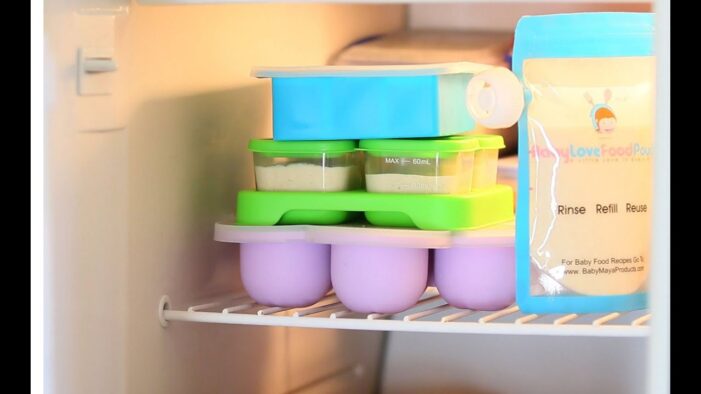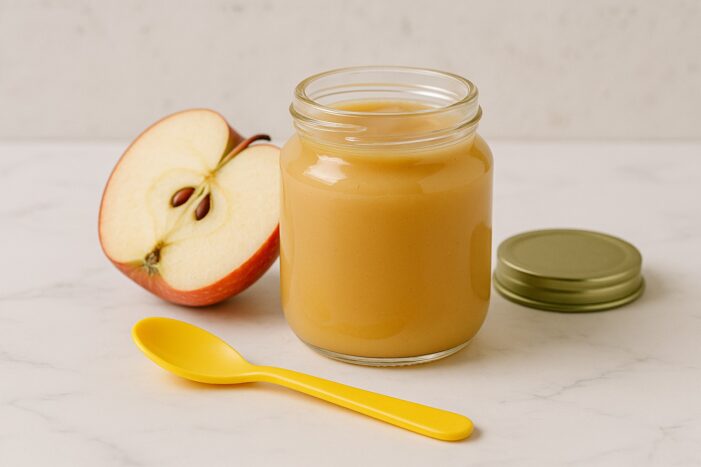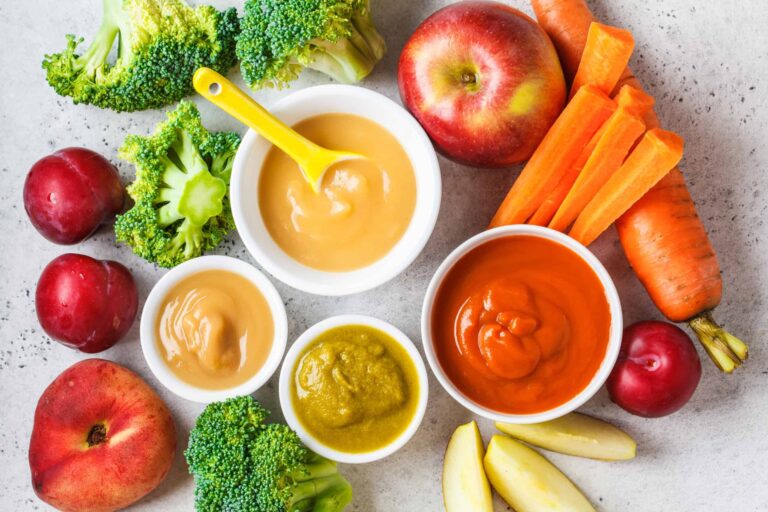Making baby food at home can be one of the most rewarding parts of early parenting. You’re choosing the ingredients, controlling the freshness, and preparing everything with care. But let’s be honest, it also comes with a few questions. How do you store it safely? Can it be frozen? Will it still taste good after a few days?
If you’re in that stage of purees and mashed avocados, here’s a full guide to help you keep homemade baby food both safe and appealing, without stress.
Why Homemade Baby Food?

For many parents, making food at home feels like a natural extension of the care they give every day. You know exactly what’s going into your baby’s body, and you’re able to introduce new flavors on your own timeline.
But along with the control comes responsibility: no preservatives, no additives, no shortcuts. Food safety becomes a non-negotiable.
When you spend hours prepping and pureeing, the last thing you need is a fridge breakdown. Luckily, good appliance repair can keep your fresh batches safe.
With that said, there are many details you should pay attention to when preparing food for your baby safely. Let’s talk about how to do it right.
Hygiene Is Step One
Before a single banana gets mashed or a pot of carrots starts steaming, everything needs to be clean. And not just kind of clean.
What to focus on:
- Wash hands thoroughly before preparing anything. Always.
- Clean all surfaces—countertops, highchair trays, cutting boards, and utensils. Hot water and dish soap work fine, but you can also use a baby-safe kitchen disinfectant if preferred.
- Use separate equipment for baby food, especially cutting boards. You don’t want cross-contamination from raw meat or eggs.
- Sanitize blenders and food processors often, especially if they have tricky parts like rubber seals that can trap residue.
If you’re preparing food in batches, keep raw and cooked items separate at all times.
Cooking

Babies are still developing their immune systems, so even mild bacteria can be an issue. Cooking food thoroughly helps prevent that risk.
Key rules:
- Steam or boil fruits and vegetables until soft. Don’t serve undercooked root veggies like carrots or sweet potatoes.
- If cooking meats, poultry, or fish, always reach safe internal temperatures:
| Food Type | Minimum Safe Temp |
| Poultry (chicken, turkey) | 165°F (74°C) |
| Beef, lamb, pork | 160°F (71°C) |
| Fish | 145°F (63°C) |
- Use a digital food thermometer. It’s one of the best small investments you can make during the baby food phase.
Blending, Mashing, and Pureeing Tips
Texture is everything in the early days. Too chunky, and your baby might gag. Too thin, and it might slide off the spoon before reaching their mouth.
To keep texture safe and tasty:
- Add small amounts of filtered water, breast milk, or formula to reach a smoother consistency.
- Don’t add cow’s milk or salt for babies under one year.
- Use freshly cooked food while still warm, but not hot, when blending. This helps preserve taste and texture.
If you’re making mixed purees, introduce one ingredient at a time first to rule out any allergic reactions.
Storing Baby Food Safely

Here’s where a lot of parents feel unsure. You’ve put in the time, made a few days’ worth of food, and now you’re wondering how to store it.
Refrigeration Guidelines:
- Store food in sterile, airtight containers (glass or BPA-free plastic).
- Let food cool to room temperature before putting it in the fridge.
- Use within 48 to 72 hours max.
Freezing Guidelines:
If you want to make batches for the week, freezing is your best friend.
- Freeze in small portions: ice cube trays, silicone molds, or baby food storage trays work well.
- Once frozen, transfer cubes to labeled freezer bags with the date and food name.
- Keep frozen for up to 1 month for best taste and texture.
- Thaw in the fridge overnight or gently heat before serving.
Avoid refreezing anything that’s already been thawed and reheated.
Serving (How to Reheat Properly)
Reheat in Microwaves are fast, but they can heat unevenly. That’s dangerous when it comes to baby food, especially thicker purees.
Reheating tips:
- Thaw in the fridge overnight or place in a warm water bath to bring it to temperature.
- If using a microwave, stir thoroughly and test on your wrist before serving.
- Don’t leave food sitting at room temperature for longer than 2 hours.
- Always discard uneaten portions that have been in contact with your baby’s saliva. Yes, even if it feels wasteful.
Flavor Without Risk
Babies are naturally curious about taste, so you don’t have to stick with plain bland food forever. But safety should come first.
Safe flavor boosters:
- Mild herbs like basil, dill, or cinnamon (in small amounts)
- Fruit puree blends—apples with pears, bananas with avocado
- Vegetable mixes—zucchini with peas, or sweet potato with parsnip
Avoid until later:
- Honey (risk of botulism for babies under one)
- Salt (too much sodium for kidneys)
- Added sugars
- Spices that are too hot or irritating
Let flavor develop gradually. Your baby’s palate is still discovering the world.
Watch for Allergies

Introducing solids means watching for possible reactions. Even with homemade food, there are risks.
High-allergen foods to introduce with care:
- Eggs
- Dairy (after 6 months and with doctor’s clearance)
- Peanuts (in powdered or thinned paste form)
- Fish
- Wheat
Give one new food at a time and wait 3 to 5 days before adding another. Keep notes on any reactions like rashes, vomiting, diarrhea, or trouble breathing, and contact your pediatrician immediately if you notice anything concerning.
Batch Cooking Without the Burnout
If you’re working, juggling other kids, or just trying to get through the week, the idea of batch cooking may sound like a dream, or a nightmare.
It doesn’t have to be complicated.
A few realistic strategies:
- Pick one day a week for prepping. Sunday afternoons work for many families.
- Stick to 3 to 4 vegetables or fruits per week and rotate. No need to prepare 12 kinds of purees every time.
- Keep your freezer stocked with staples: sweet potato, apple, green beans, peas, banana.
- Use a meal prep planner or print a checklist to stay organized.
Batch cooking saves time and gives you more peace during chaotic mealtimes.
Equipment That Helps
You don’t need to buy a whole new kitchen setup. But a few tools do make things easier and safer.
| Tool | Why It Helps |
| Steamer basket | Keeps nutrients intact when cooking |
| Hand blender | Easy to clean and use in small batches |
| Ice cube tray | Great for freezing single portions |
| Silicone baby spoons | Gentle on gums, easy to clean |
| Baby food containers | Airtight and portion-sized |
If you’re planning to make your own food regularly, investing in a baby food maker (combined steamer and blender) can be worth it.
Keeping It Tasty Over Time

Frozen peas or pureed apple may technically be safe for a month, but will your baby still enjoy them?
A few taste-saving tricks:
- Use frozen food within 2 to 4 weeks. Fresher is always better when it comes to taste.
- Avoid reheating more than once.
- Blend fruits with a few drops of lemon juice to prevent browning.
- Don’t overcook when prepping—oversteaming dulls flavor and color.
- Try serving food cool or room temp if your baby rejects warm meals. Preference matters.
If your baby turns their head away, don’t force it. Try again in a few days or switch up combinations.
Common Mistakes to Avoid
Even with the best intentions, a few errors can slip through. Here’s what to watch out for.
Be careful not to:
- Reuse leftover food from baby’s bowl (bacteria risk)
- Keep purees in the fridge longer than 3 days
- Freeze in containers not meant for freezing (they can crack or leach plastic)
- Skip washing produce—even organic fruit and vegetables
- Forget to label frozen food (you’ll regret the mystery cubes later)
Mistakes happen. The goal is to be consistent, not perfect.
Final Thoughts
Making your own baby food is one of those tasks that blends care with craft. When it’s done safely, it becomes more than just a chore, it’s a way to connect with your baby’s development, one spoonful at a time.
Stick to clean prep, safe storage, and gentle flavors. You don’t need to be a gourmet chef. You just need to stay mindful.
A little planning goes a long way toward keeping every puree fresh, safe, and genuinely enjoyable, for both you and your little one.

